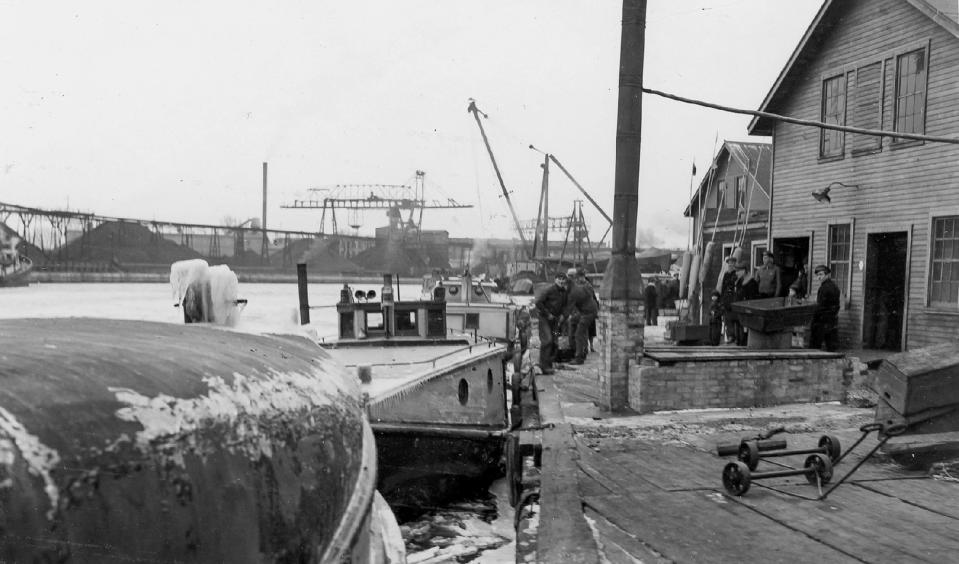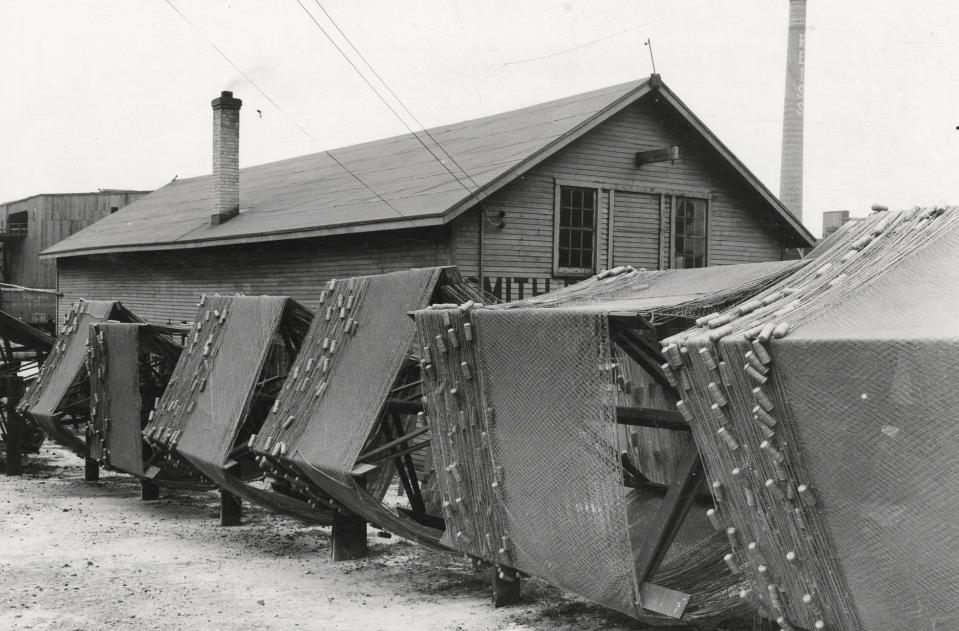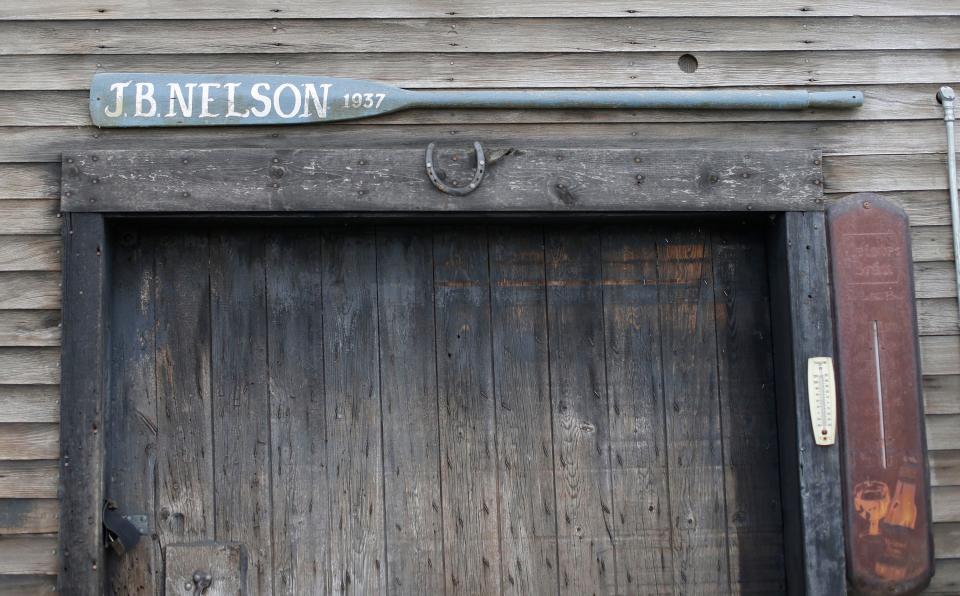Sheboygan’s fish shanties, today home to businesses, reflect bravery of early fishermen: Throwback
SHEBOYGAN - Lake Michigan's bounty of fish developed a thriving commercial fishing industry that continues to this day, although on a smaller scale.
In the early days, according to Sheboygan Press clippings from the Sheboygan County Historical Research Center, fishing the waters on the lake was noted as early as 1836 by explorers who witnessed local Indigenous people spearing fish. They also noted a rough lot of Ohio fishermen operating here at the time.
By 1845, four extensive fisheries cemented the industry in Sheboygan.
Before the age of steam power and steel-constructed tugs, fishing was conducted with sailboats and pound nets. In those early years, they ventured near shore, but eventually ventured as far out as 20 miles from shore in the 1920s.

Early fishermen were known to be brave — and they knew it. Ernst A. Sonnemann, who retired in 1920, began his trade in 1875 when he worked for Jim Clausen. A year later, he bought his own sailboat and started himself on a larger scale. Sonnemann named two of his boats Fearless No. 1 and Fearless No. 2, as he was known as the most fearless fisherman on Lake Michigan. He admitted in a Press article that his work was not all sunshine and roses, but it was exciting.

In 1885, Sonnemann had an adventure on the lake when he was fishing from the Carl, a tug built in Sheboygan by Ben Lochlin. The day started off sunny and clear. Little did Sonnemann know at the time he would encounter one of the worst blizzards ever known in the history of the region. The Carl pushed her nose into the breast of the high sea, which rolled over the vessel's deck. As the day carried on, the storm grew more fierce, making it impossible for sailors at the bow of the boat to know if there were sailors at the stern of the vessel. To complicate matters, the Carl did not have a compass, which made the sailors unsure of their location.
Sonnemann's intuition helped guide the boat safely back to harbor. He then discovered the oil skins he wore were frozen to his body.
Shanties that dot the riverfront have always been a fluid proposition. As far back as the 1930s, shanties were torn down to improve docks along the riverfront.

As time went on, fewer and fewer shanties were devoted to fishing, and replacement buildings along the riverfront gave a nod in their design to look like fishing shanties.
Those buildings today house a variety of businesses from eateries to boutiques.
Today, two commercial fishing tugboats remain, the William G. and the JB Nelson.
To see the image larger, click here
RELATED - Gallery: Sheboygan fishing boats through the years
RELATED - Sheboygan Yacht Club | Throwback
RELATED - Sheboygan's South Pier was once a coal and industrial hub | Throwback
This article originally appeared on Sheboygan Press: Lake Michigan commercial fishing helped by early shanties in Sheboygan

